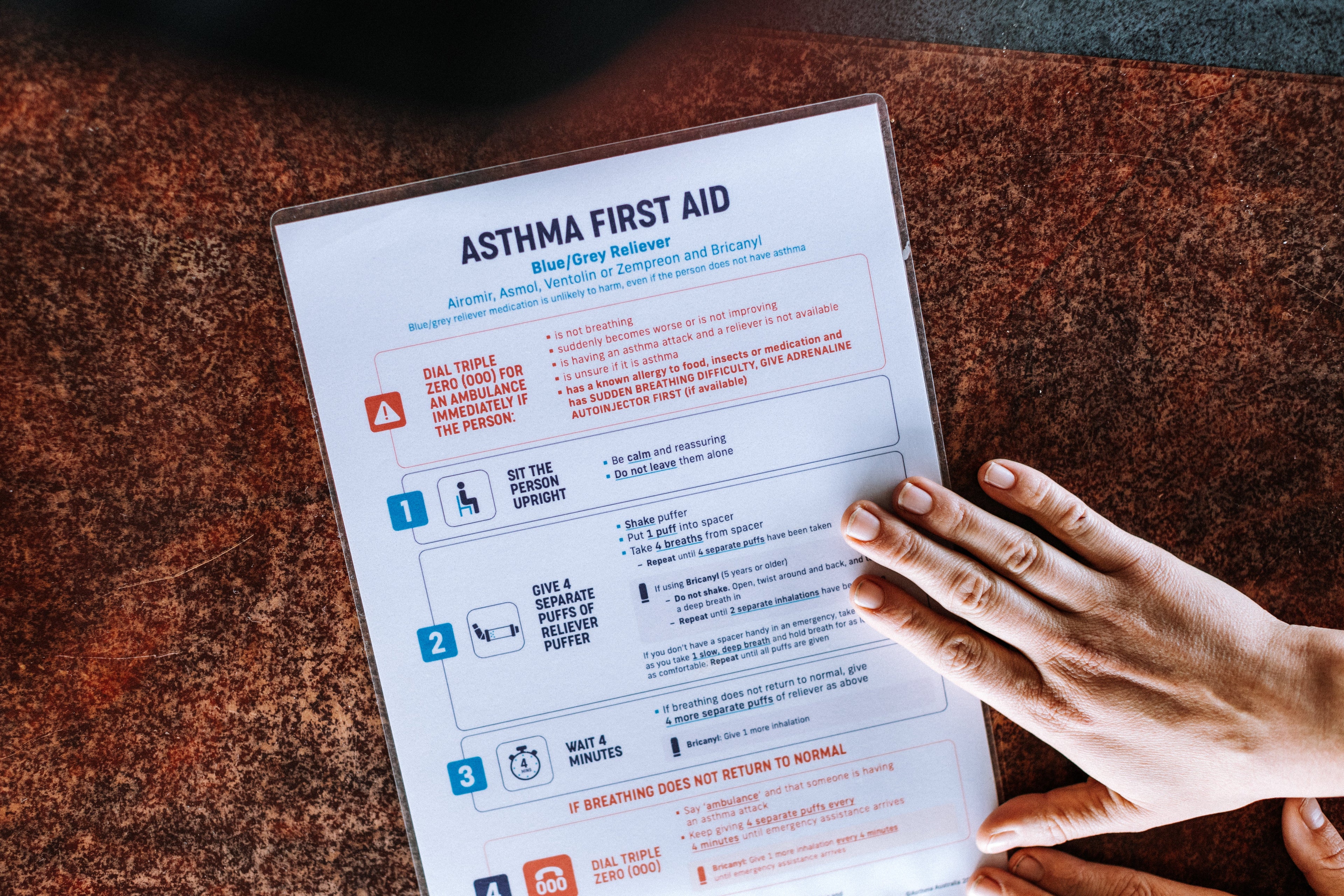Workplace requirements for schools
Share
General Recommendations:
Risk Assessment: Schools should conduct a thorough risk assessment to determine the appropriate number and placement of first aid kits. This assessment should consider the specific needs and potential hazards associated with different areas within the school.
Accessibility: First aid kits should be easily accessible to staff and students. They should be located in prominent areas, especially where there is a higher risk of injury, such as science laboratories, sports facilities, and workshops.
Maintenance: Regular checks should be conducted to ensure that first aid kits are fully stocked, and any used or expired items are replaced promptly. A designated staff member, often a first aid officer, should be responsible for this maintenance.
Portable Kits: For activities conducted outside the main school premises, such as excursions or sports events, portable first aid kits should be available and carried by supervising staff.
Number of first aid kits required:
Victoria:
The Victorian Department of Education provides detailed guidelines on the minimum number of first aid kits required in schools, based on the total number of staff and students:

Additionally, for schools where access to medical and ambulance services is limited (e.g., remote locations or during field excursions), it is recommended to have 2 additional first aid kits for every category above.
New South Wales, Queensland, South Australia, Western Australia, Tasmania, Northern Territory, and Australian Capital Territory:
Specific numerical requirements for first aid kits in schools are not explicitly detailed in the available sources for these states and territories. However, general guidelines suggest that the number of first aid kits should be determined based on a risk assessment that considers factors such as:
The number of staff and students
The nature of activities being undertaken
The size and layout of the school premises
The proximity to medical facilities
Number of staff required to be trained in first aid:
Australian Capital Territory (ACT), Western Australia (WA), Northern Territory (NT), Queensland (QLD), Tasmania (TAS)
At least one staff member or nominated supervisor with a current approved first aid qualification, anaphylaxis management training, and emergency asthma management training be in attendance and immediately available in an emergency at all times when children are being educated and cared for by the service.
New South Wales (NSW):
Schools with up to 500 students: At least one first aid officer must be appointed to manage day-to-day first aid requirements.
Schools with more than 500 students: Two first aid officers should be appointed.
South Australia (SA):
Teachers starting employment in a department site must have an approved first aid certificate.
Provide Basic Emergency Life Support (HLTAID010): This course is accepted as the minimum first aid training requirement for teacher employment.
Provide First Aid in an Education and Care Setting (HLTAID012): This course is recommended for teachers seeking employment in early childhood programs, as it satisfies the requirements for asthma and anaphylaxis management.
Victoria:

Which Nationally recognized first aid course do my staff need to complete?
VIC:
Each First Aid Officer must have completed a recognized first aid training course that meets the requirements of HLTAID011 – Provide First Aid and HLTAID009 – Provide Cardiopulmonary Resuscitation (CPR). The HLTAID011 certification should be renewed every three years, while the HLTAID009 CPR refresher course must be completed annually.
NSW:
In NSW public schools, teachers are required to complete mandatory training in e-safety and anaphylaxis. Additionally, schools are mandated to provide CPR training, although attendance is not compulsory for all staff. While not all staff are required to have a current first aid certificate, it is recommended to participate in CPR training sessions when offered.
SA:
Provide Basic Emergency Life Support (HLTAID010): This course is accepted as the minimum first aid training requirement for teacher employment.
Provide First Aid in an Education and Care Setting (HLTAID012): This course is recommended for teachers seeking employment in early childhood programs, as it satisfies the requirements for asthma and anaphylaxis management.
For a comprehensive and up-to-date list of approved first aid qualifications and training, educators and service providers should refer to ACECQA's official resources. This ensures that the training undertaken meets the national standards required for education and care settings.
What should be included in a first aid kit?
Victorian requirements Click here
SA requirements Click here
Other states and territories have recommended lists for educators, requiring teacher logon.
Safe work Australia guides the contents of kits based on risk assessment. You can find a general guide here.
Regular maintenance of first aid kits is crucial. Schools should establish procedures to ensure kits are fully stocked, items are within their expiry dates, and used items are promptly replaced.
Tell me about asthma and anaphylaxis requirements.
National Training Resource:
The Australasian Society of Clinical Immunology and Allergy (ASCIA) offers free, evidence-based e-training courses on anaphylaxis management tailored for schools and children's education/care staff across Australia. These courses are accessible online and provide consistent training on recognizing and responding to anaphylaxis emergencies.
New South Wales (NSW):
Anaphylaxis Training: All permanent, temporary, and casual school-based staff are mandated to complete an anaphylaxis e-learning module every two years. Additionally, schools must arrange annual face-to-face CPR and anaphylaxis training through approved providers
Victoria:
Anaphylaxis Training: School staff must complete the ASCIA Anaphylaxis e-training for Victorian Schools, followed by a competency check conducted by a school anaphylaxis supervisor. This training is valid for two years. It's recommended that each school appoints two staff members as anaphylaxis supervisors, who are required to undertake the "Course in Verifying the Correct Use of Adrenaline Injector Devices 22579VIC," valid for three years.
Queensland:
Asthma and Anaphylaxis Training: The appropriate number of staff to complete anaphylaxis training based on an assessment of risk, at no less than the ratio of 1:25 (trained officer to staff, students and visitors) or 1:10 for schools that do not have timely access to medical and ambulance services to a maximum of all staff arrange for school staff to complete as required: the online ASCIA anaphylaxis e-training for Queensland schools a practical, simulated training session using an adrenaline auto-injector training device an approved asthma management course maintain a register of staff who have completed training and when refresher training is due.
South Australia:
Anaphylaxis Training: The Department for Education mandates that all staff complete approved anaphylaxis management training. Specific course requirements and intervals for refresher training are outlined by the department.
Asthma Training: Staff are required to undertake approved emergency asthma management training, with details provided by the Department for Education.
Western Australia (WA):
Anaphylaxis Training: The Department of Education requires all school staff to complete anaphylaxis management training. Specific course details and training intervals are provided by the department.
Asthma Training: Staff must undertake approved emergency asthma management training as specified by the Department of Education.
Tasmania:
Anaphylaxis and Asthma Training: The Department of Education mandates that staff complete approved training in both anaphylaxis management and emergency asthma management. Details on approved courses and training intervals are provided by the department.
Northern Territory (NT):
Anaphylaxis and Asthma Training: The Department of Education requires staff to undertake training in anaphylaxis and asthma management. See the Allergy aware guidelines for further details.
Australian Capital Territory (ACT):
Anaphylaxis and Asthma Training: The Education Directorate mandates that school staff complete training in managing anaphylaxis and asthma emergencies. Approved courses and training frequencies are specified by the directorate.


